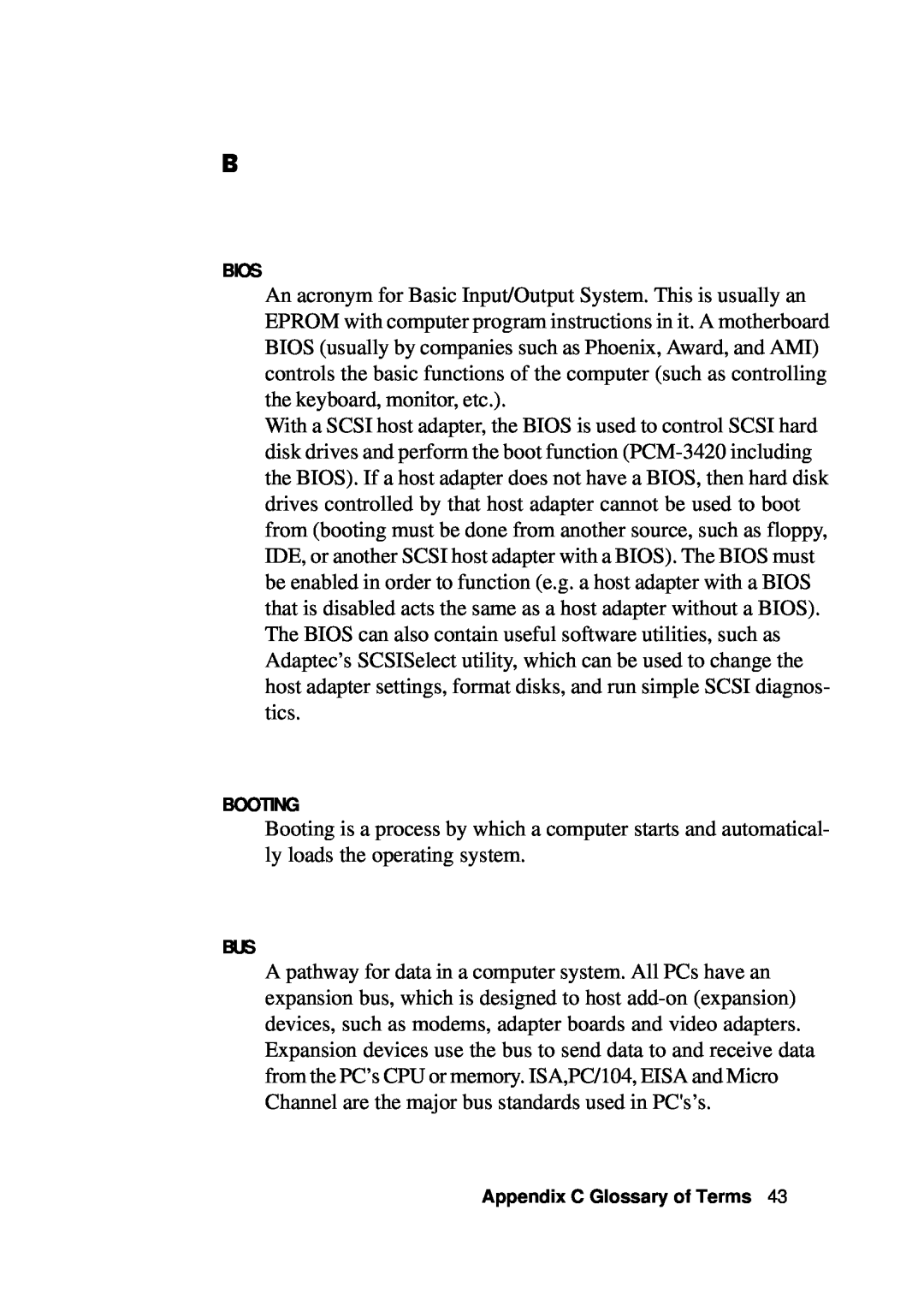B
BIOS
An acronym for Basic Input/Output System. This is usually an EPROM with computer program instructions in it. A motherboard BIOS (usually by companies such as Phoenix, Award, and AMI) controls the basic functions of the computer (such as controlling the keyboard, monitor, etc.).
With a SCSI host adapter, the BIOS is used to control SCSI hard disk drives and perform the boot function (PCM-3420 including the BIOS). If a host adapter does not have a BIOS, then hard disk drives controlled by that host adapter cannot be used to boot from (booting must be done from another source, such as floppy, IDE, or another SCSI host adapter with a BIOS). The BIOS must be enabled in order to function (e.g. a host adapter with a BIOS that is disabled acts the same as a host adapter without a BIOS). The BIOS can also contain useful software utilities, such as Adaptec’s SCSISelect utility, which can be used to change the host adapter settings, format disks, and run simple SCSI diagnos- tics.
BOOTING
Booting is a process by which a computer starts and automatical- ly loads the operating system.
BUS
A pathway for data in a computer system. All PCs have an expansion bus, which is designed to host add-on (expansion) devices, such as modems, adapter boards and video adapters. Expansion devices use the bus to send data to and receive data from the PC’s CPU or memory. ISA,PC/104, EISA and Micro Channel are the major bus standards used in PC's’s.
Appendix C Glossary of Terms 43
